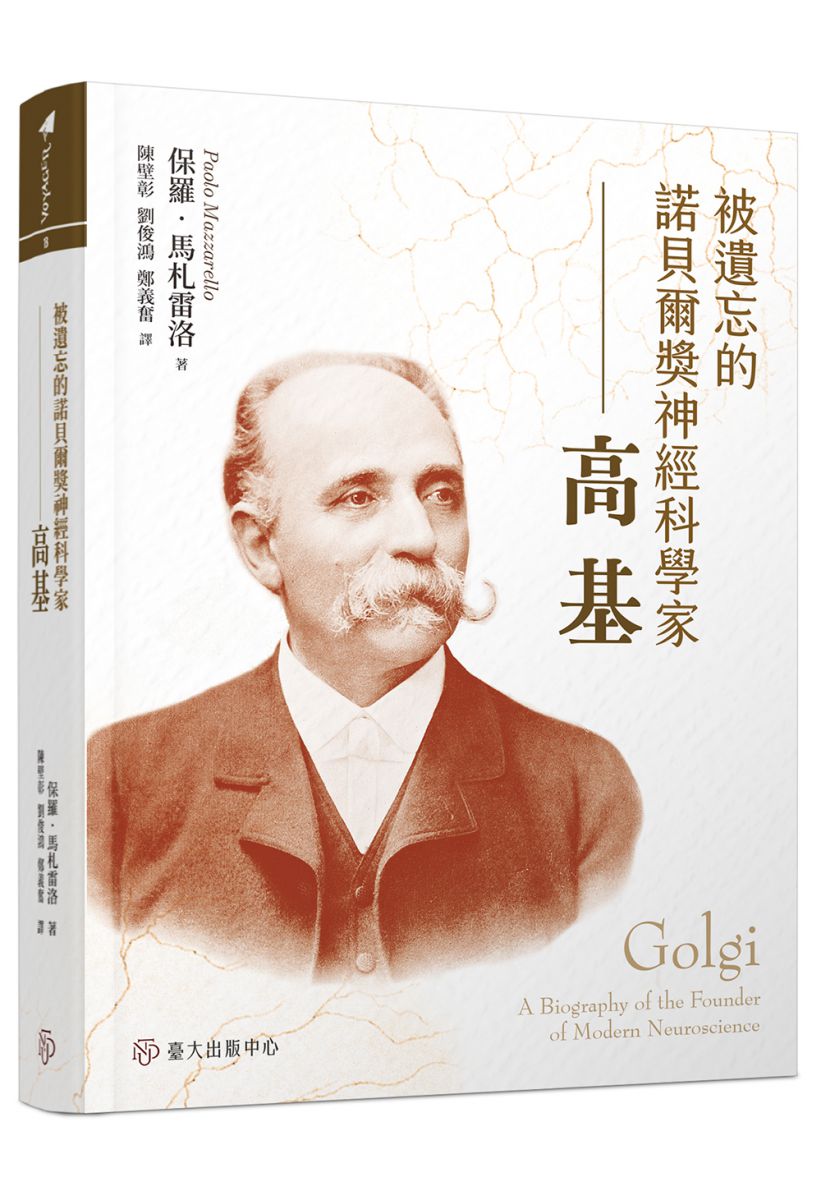《被遺忘的諾貝爾獎神經科學家──高基》以豐富文獻建構高基生平,呈現其人在科學領域的研究歷程2023-12-19
 《被遺忘的諾貝爾獎神經科學家──高基》
《被遺忘的諾貝爾獎神經科學家──高基》
保羅.馬札雷洛(Paolo Mazzarello) 著
陳壁彰、劉俊鴻、鄭義奮 譯
卡米洛.高基(Camillo Golgi)是活躍於十九世紀末至二十世紀初的義大利科學家,他開發出一種細胞染色技術──黑反應,首次揭示了神經細胞的完整輪廓,這項成就宛如伽利略的望遠鏡天體發現,讓科學家終於得以解析如同宇宙般神祕的大腦之結構,奠定了現代神經科學的基礎,並使他與西班牙科學家拉蒙.卡哈爾(Ramón y Cajal)共同獲得了1906年的諾貝爾生理醫學獎。然而,今日大多數人印象中的「高基」,往往只是細胞構造「高基氏體」的代名詞,又或是聯想到他的「敗者」形象:他在諾貝爾獎頒獎典禮上,是如何脫節地堅決反對拉蒙.卡哈爾的神經元理論……
為能讓這位沉寂百年的科學巨擘得到應有的認可,本書作者以其神經科學與科學史的專業,透過豐富、詳實的文獻資料建構出高基的時代背景與其生平,並鉅細靡遺地呈現高基在神經科學、細胞生物學、傳染病學等科學領域的研究歷程,讀者將能看到一位堅定的實證主義科學家窮其一生投入科學研究的學者風範,並深刻地感受到他的科學貢獻之偉大!
This book is a complete biography of Camillo Golgi, one of the most prominent European researcher between the Nineteenth and the Twentieth century, a period of dramatic scientific development. The life of Golgi was an extraordinary intellectual adventure in three major fields of biology and medicine, namely the neuroscience, the emerging cell biology and the new science of medical microbiology.
In 1873, Golgi published the description of a revolutionary histological technique which allowed, for the first time, to visualize a single nerve cell with all its ramification which could be followed and analyzed even at a great distance from the cell bodies, the so called black reaction (later named the Golgi method). This invention provided the spark to a truly scientific revolution which allowed the morphology and the basic architecture of the cerebral tissue to be evidenced in all its complexity, thus contributing to the foundation of the modern neuroscience. It has been written that, in the same way Galileo Galilei was able to find new stars observing with his telescope any sky region, Golgi was able to find new nervous structures and nerve cells by applying his black reaction to any brain region. Finally, the details of the most complex structure in the known universe, the brain, could be characterized.
Golgi also strongly contributed to the development of cell biology with the discovery of one of the major organelles of the cell, the internal reticular apparatus (later named the Golgi apparatus or the Golgi complex or simply the Golgi) and to medical microbiology with his description of the human malaria parasitic development inside the red blood cells (Golgi cycle).
He was also a prominent political figure who deeply influenced the Nineteenth century development of science in Italy.